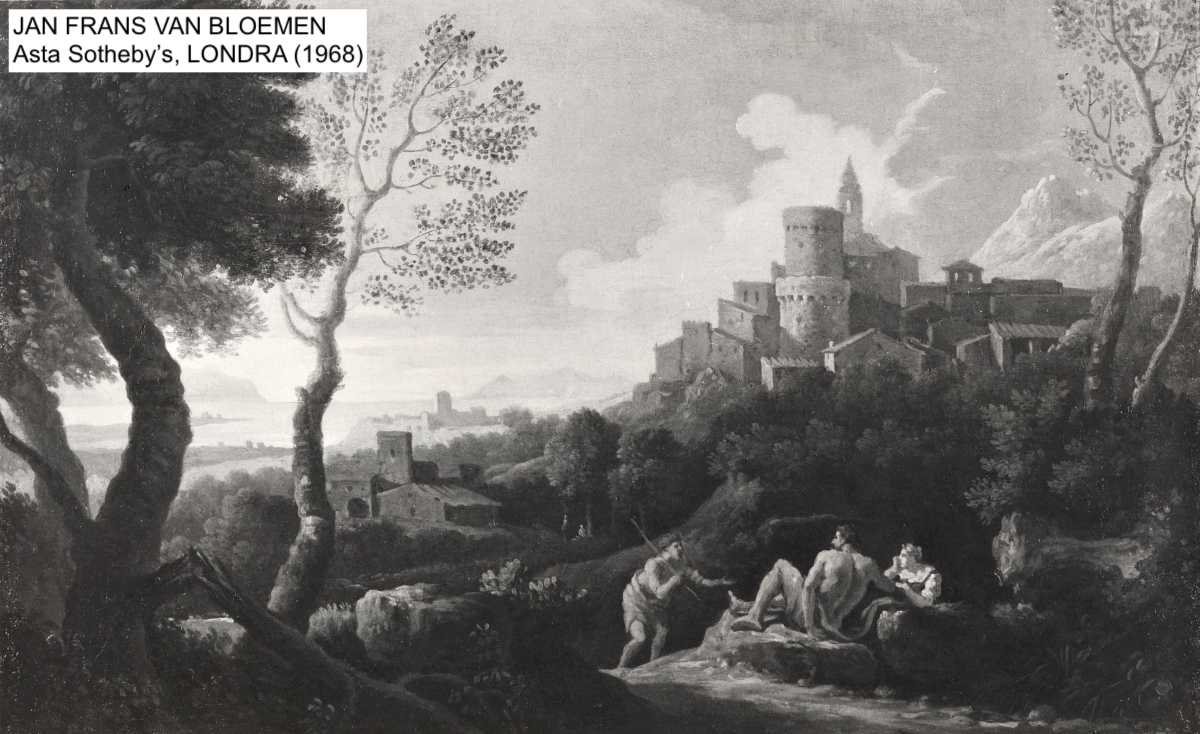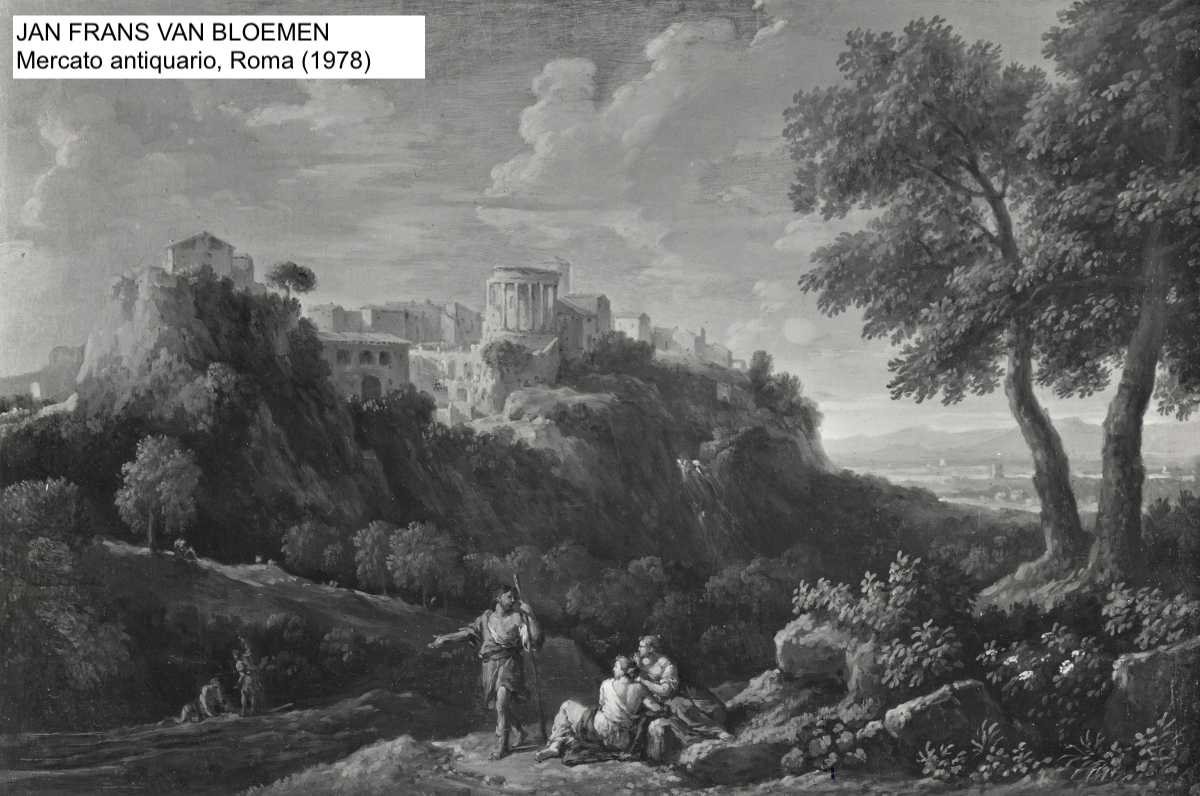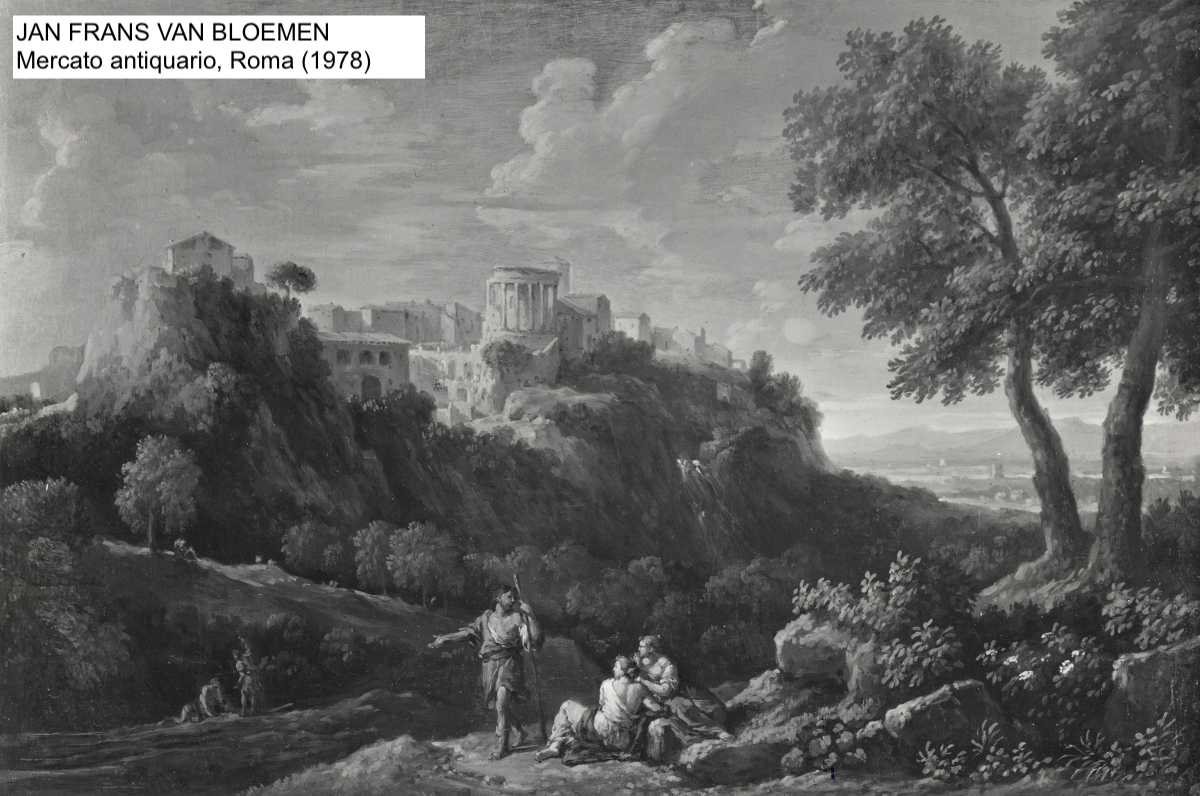Jan Frans Van BLOEMEN, detto l'Orizzonte (Anversa 1662 – Roma 1749)
Paesaggio arcadico con figure e una città fortificata sullo sfondo
Jan Frans Van Bloemen, called 'L'Orizonte'
(Antwerp 1662 - Rome 1749)
Arcadian landscape with figures in the foreground and a fortified city in the hills in the background
Oil painting on canvas
measurements: 76 x 98 cm
framed 94 x 115 cm.
Provenance: Roy Miles Art Gallery, London - Private collection, Vienna
This remarkable Arcadian landscape, clearly refers to the hand of one of the greatest landscape painters active in Rome between the late seventeenth and early eighteenth century, Jan Frans Van Bloemen called L'Orizzonte.
The work reflects an emblematic example of the Bloemenian landscape, where it is possible to trace the salient points of his painting, such as the horizons resplendent by the changing play of light and shadow, the hills kissed by a pastel and almost fairy light, the intense green of the vegetation and the typical touches of light cadenced between the leaves of the trees, as well as the mountains in the background, soaked in light.
The structure of the composition, with the fortified town in the hills, recalls the districts of Lazio between Orvieto and Orte, recalling the Tivoli area, one of the favorite places during the Grand Tour.
Of Flemish origins, Van Bloemen learned the art of drawing in his homeland by initially studying with Anton Goubau. After a Parisian stay documented between 1682 and 1684, he moved to Italy with his brother Pieter (also a painter, known by the nickname "Stendardo"), passing from Turin to Rome, the latter where he resided permanently, except for a short trip to southern Italy.
After a debut all oriented towards the execution of landscapes markedly Dugettians, he acquired in Rome at the end of the seventeenth century an extraordinary fame as a landscape artist, winning the nickname of «Horizon». Its bright, bright colors, sometimes tending to pastel tones, gradually toppled the hegemony of the brown tones and dark seabed typical of its famous predecessor Dughet.
The stylistic suggestions he had borrowed from fellow painters such as Claude Lorrain and Jacob de Heusch, not forgetting Andrea Locatelli, his bitter rival in claiming the role of the greatest exponent of that genre in the City.
Because of the purely idyllic setting of the presented scenario, permeated by suggestive oscillations between mythology and reality, and with their timeless atmosphere that recalls the legend of Arcadia, it is possible to deduce that the work in question was carried out in the phase advance of his career, then in the early part of the eighteenth century.
Work that will be accompanied by the expertise of Prof. G. Sestieri

_by_Jan_Frans_van_Bloemen.jpg)
.jpg)


